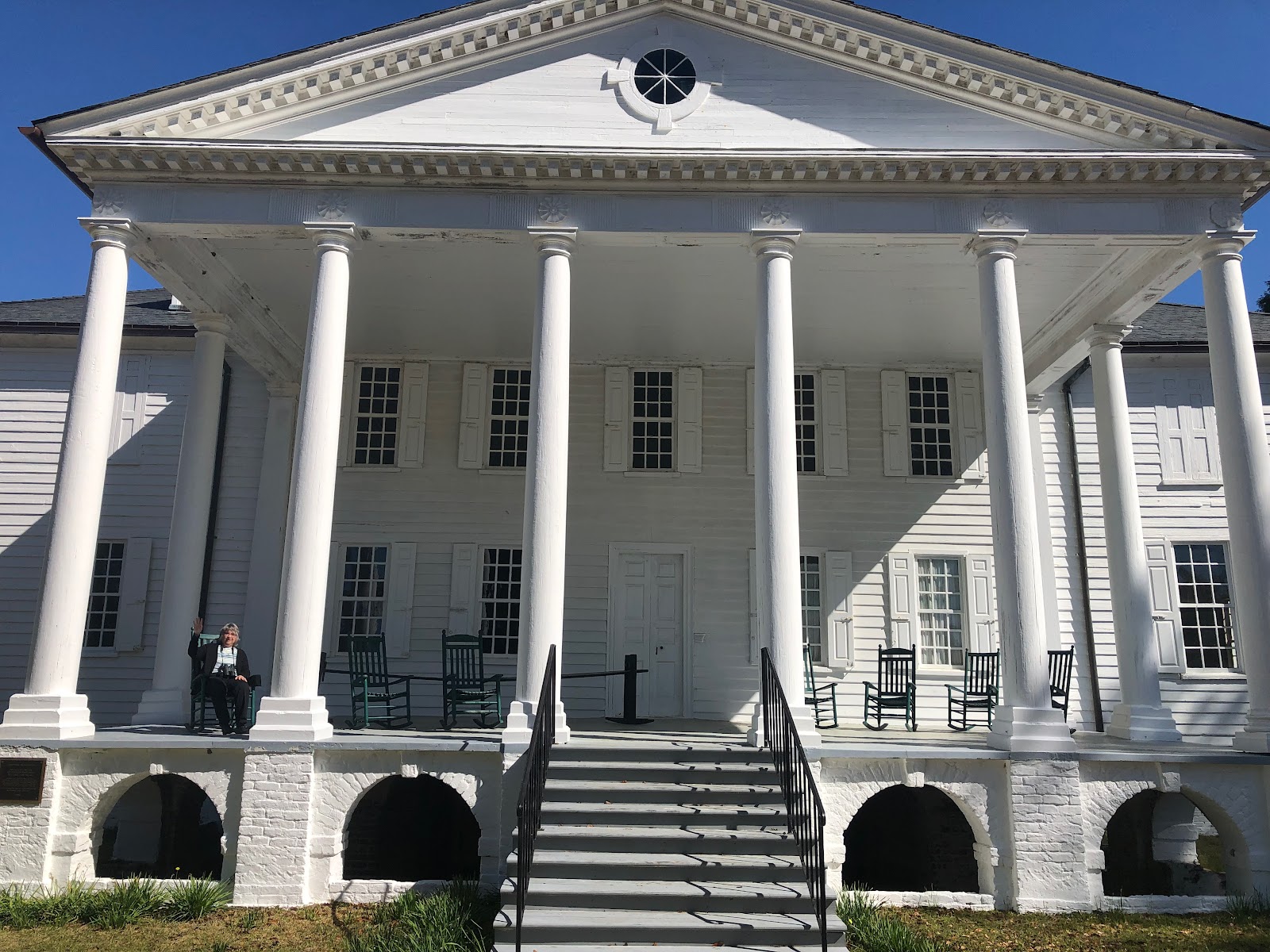During our recent visit to the beautiful Hampton Plantation south of Georgetown (see the previous post), I spent some time sitting on the large portico facing the front yard. The house is situated between a small rice field and a wooded path to the family cemetery. Wambaw Creek is in back, and in front of the portico would have been an expansive view of the front lawn - except that a huge live oak tree stands in the way of the scene. And barring an act of nature, that enormous oak will block the panorama for many more years. It has its own illustrious history and story.
The year was 1791, springtime, and George Washington was traveling on an extended trip through the southern states in an attempt to unify all parts of the infant nation. After spending the night in Georgetown, he stopped the next morning at Hampton Plantation for breakfast. The portico on which I was relaxing was constructed all those years ago especially for this important visit.
The home at the time was owned by the Horry and Pinckney families, ancestors of long-time Hampton owner and state poet laureate Archibald Rutledge. All those names should ring a bell for South Carolinians who know the history of our state. The Declaration of Independence was signed by John Rutledge, and the Constitution by two of the Pinckney men. And Myrtle Beach is in the county that was named for the Horry family.
When Washington arrived at Hampton that long-ago morning, he was greeted by Harriott Pinckney Horry and her mother, Eliza Lucas Pinckney (famous in her own right for her work in indigo production). The two women were naturally very excited to have the first president of the United States visit their home. They told Washington that because the view of the front lawn was obstructed by the large oak tree, they were going to have it cut down. They asked him what he thought. Washington disagreed, told them he liked the tree, and thought they should keep it!
Thus, the ladies reconsidered their decision and allowed the tree to remain. It has steadily grown in that front yard for the past 232 years, and has been fondly called the “Washington Oak” in honor of the great man whose opinion kept it from being removed.
Fast forward back to 2023. After leaving the portico and walking around the grounds with Mike, I later sat for a few minutes longer on the bench directly beneath the Washington Oak. Just sitting there helped me sense a little part of the great history of the place. The Washington Oak still stands, as does the rest of Hampton Plantation, as a treasure of our beautiful state.

